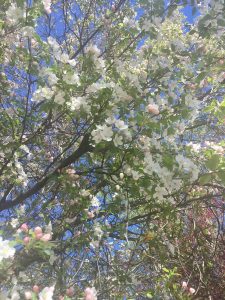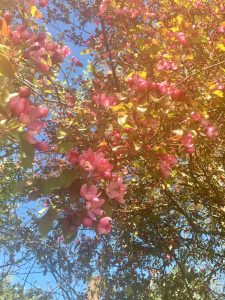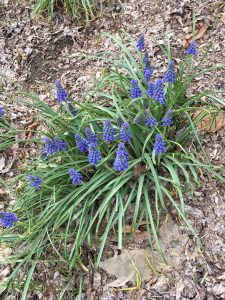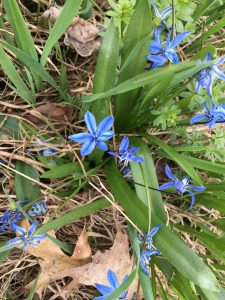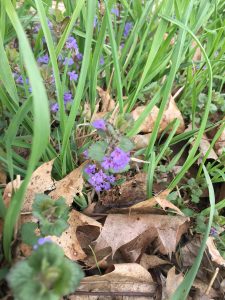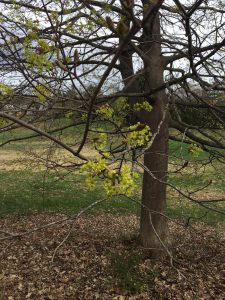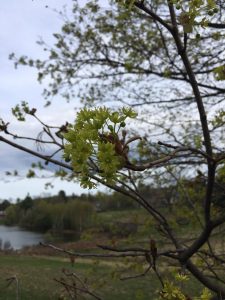Good [insert time of day here], readers! I hope everything is going well for you today.
On Thursday, I walked to the Co-op Food Store in search of some salmon to cook for dinner, but came across some beautiful trees in bloom along the way. I paused to take some pictures of these lovely angiosperms, which reside on Lebanon Street.
I used this website to identify the plants that I saw.
The first tree I came across was dotted with pink buds and white flowers that had protruding stamen. The leaves were widest in the middle, and had serrated edges, growing in whorls around the blooms. After using the tree identifier website, I concluded that this tree was a crabapple from the Malus genus, but was unable to identify the exact species, since many species from the Malus genus look extremely similar.
This second flowering tree also had five-petaled flowers and serrated-edged leaves that were widest at the middle. These blooms were pink rather than white, though, and the buds were an even darker shade of pink. After consulting the website, I identified this tree as another crabapple from the Malus genus; yet again, I was unable to identify the exact species.
The Malus genus contains deciduous apple trees and shrubs, including the domesticated apple tree (Malus pumila), as well as crabapples. These trees are completely self-sterile, requiring cross-pollination by insects, such as bees and butterflies. Flowers range from white to red, and bloom in the spring. Plants from the Malus genus are native to temperate areas of the Northern Hemisphere, including China, Japan, and Taiwan.
The next plant I came across had tall, brown stalks with smooth bark dotted in striking clusters of four-petaled yellow flowers. The flowers’ pistils were visible, but the stamen were not. The leaves were small, green, and widest at the middle, with smooth edges. I used the tree identification website to find out that these shrubs were Forsythia viridissima, from the olive family. These plants are native to eastern Asia and southeastern Europe, but have been imported to the North America. Forsythia viridissima originated in China, but can be found in New England in Connecticut, Massachusetts, and New Hampshire.
Once again, I enjoyed my walk, since it was brightened by the presence of beautiful flowers. It was great fun to figure out exactly what plants I had seen.
Have you seen any crabapple trees or forsythia recently? What do you think of my pictures? Do you have a favorite flowering tree? (I quite like plum tree blossoms, which bloom in the winter.)
Thanks for reading,
Janine ☀️

